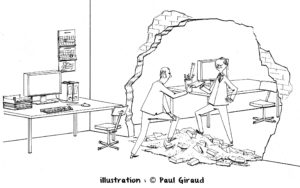Lean Administration Applied: The Recruitment Process (Part 2)
Lean Administration Applied: The Recruitment Process (Part 2)
What happens now? As I said, the joint recording of the actual lived process already provides for some ‘aha effects’: often here it is understood first of all what the colleagues are doing and what they actually need for their work. Now that the value stream is available, including all problems such as queries, disruptions, etc., you can start optimizing step by step.
You go through the individual faults and clarify the causes of the problem. For more complex questions the use of the ‘Ishikawa diagram’ is recommended in order to be able to fully record all possible causes of the problem. Possible countermeasures are then developed and implemented on the basis of this analysis. It is important that the responsibilities are clearly named and that the managers support and promote the project. A concrete example of the effectiveness of the method:
In a large university hospital there is an acute shortage of medical and nursing staff. The analysis of the personnel hiring process showed that on average 9 months elapsed from the receipt of an application to the conclusion of the employment contract. In addition, 16 (!) different departments were involved in the process. The existing personnel bottleneck was thus exacerbated – the majority of the applicants had meanwhile accepted other offers. After carrying out the value stream analysis, the duration of the hiring process was reduced by 4 months, the number of departments involved was reduced to 10 and the average workload per application can be reduced by 30%.






